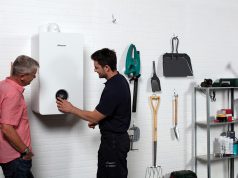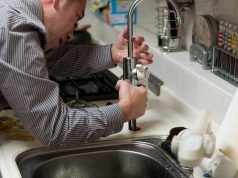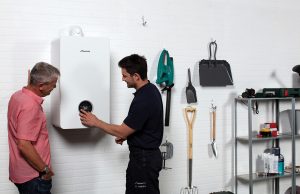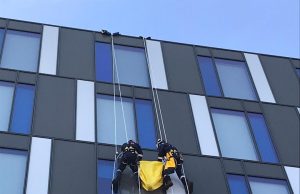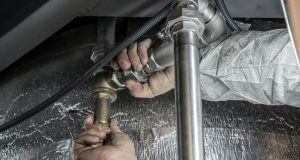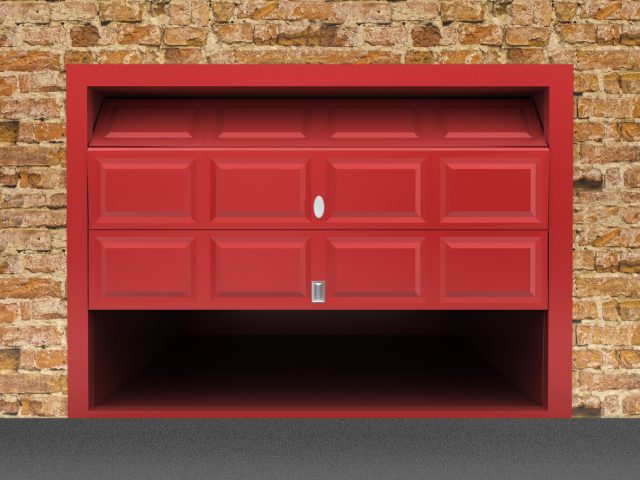
An automatic garage door opener provides excellent convenience with only the touch of a button and security by keeping your garage locked when you’re away. Champions Garage Door Repair in Ellicott City, located in Maryland is an example of a professional company specializing in troubleshooting garage door openers and all types of repairs. Among possible malfunctions, a garage door opener might develop complications regarding opening and closing. The motor might be worn, or the remote may stop working. If your garage door opener has issues, there are several steps you can run through to fix the problem.
WE NEVER USED THE RED PART:
Identifying the source of the problem.
Firstly, you have to determine the origin of the problem. Is the motor humming and not moving anything, is there power to the opener, is the opener working but not engaging with the J arm?
First Steps
- Determine if there is electricity in the power outlet, one way is to connect another electric device that you know is functional.
- Try to operate the motor by using the wall unit. If there is no sound and nothing is moving, most likely the motor or the entire unit needs to be replaced.
- If you can hear a humming sound but nothing is moving, the problem is most likely a broken gear inside the motor. This can be replaced and is usually caused by unbalanced springs which cause the motor to lift a heavy door which eventually breaks the gear.
- If the motor is running and you can see the metal plate across the track move back and forth, you should try pulling the emergency release cable towards the garage door to re-engage it with the openers plate.
If you need to disengage the garage door from the opener so you can manually open it then the safest way is to do so when the door is closed because in an open position it can cause injury. Then attempt to open your garage door manually. If the door fails to open, double check if it is disconnected from the door opener. To do so, remove the pin connecting the garage door opener arm to the door and try again. If the problem persists, then do a visual inspection of the door. Check your garage door springs and lift cables first. Any breakage would be where the problem lies.
With a Wayne Dalton Door containing the Torquemaster spring inside the tube, it is harder to determine if you have a broken spring. You can look for obvious problems like locks engaged, hardware issues such as curved track worn or damaged rollers and hinges.
Step 1 – Test the presence of power
If your garage door opener isn’t working at all, check the power connection into the outlet. Test the presence of power in the outlet with another power tool. If you have power, but with an irresponsive garage door opener, then it is possible that you have an internal electrical problem, for example, a circuit board or motor start capacitor. Smell, and if and if there’s a burnt electrical odor, the problem will be in the motor start capacitor. Garage door openers have severe power surge sensitivity issues. A circuit board could fail after a lightning storm.
Installing an inexpensive surge protector that will protect your garage door opener’s components is an ideal idea. If you are using a decade plus garage door opener, replacing the unit is an excellent decision else you will spend more on frequent repairs.
Step 2 – Is the motor making a sound?
If your garage door opener can’t open or close when you are holding down the wall button and with the motor operating, meaning it is making a sound, then it is the internal or external drive gear on the door opener that is worn out or damaged. You can inspect the drive gears by removing the motor cover or rail.
Check your company’s website for more information. Pro Drive, Wayne Dalton Quantum, Classic Drive chain and belt drive openers come with a gear located on top of the opener which is a two-piece system.
Step 3 – Determine the problem
Determine if it is a mechanical, safety feature or electrical problem. If it is a safety issue, the light on the opener will flash once activated. Push the wall button down and hold until it the door travels down to the closed position. Then release the button and begin checking for the problem. Check your photo-eye safety sensors if they are aligned or damaged. If they are not aligned, the indicator light will be off and blinking on one of the eyes. If aligned and the lights are not lit, check for frayed wires, loose connections, and faulty plugs. Check the motor unit itself if all is fine, to confirm the settings of the opener. You can use a small screwdriver or thumb turns for these adjustments. Always consult your manual which is usually available for download from the manufacturer’s website.
Step 4 – Lubrication
The traveling carriage itself is another common garage door opener issue. This opener parts run up and down the opener rail and connects the garage door to the opener. It also functions as the disconnect device that facilitates manual operation. The Genie screw drive opener is known for having its failing carriage. Be sure to lubricate the screw using the right white lithium grease (low temperature. If you do not lubricate the rail, then be ready for premature wear out of your carriage.
Step 5 – Check your remote
Check the remote-control transmitter. Are your transmitter batteries fresh? Using batteries for typically 1-3 years is ideal, but it also depends on the way you handle them. Range problem comes when the battery power is nearing its end. Go straight and check your wall console to ensure that the security switch of the system or vacation mode is not activated, if all your remote-control transmitters have failed to function. With the vacation mode activated, that automatically lockouts every remote control and keypads. Only the wall button at this time can open or close your garage door. If the vacation mode and security switch are off, then a faulty receiver on your circuit board might be the issue. Replacing the transmitter is the first step before replacing the openers motherboard.
Step 6 – Last check
Have you heard of door openers that open and close on their own? That rarely happens though. First and foremost, make sure your transmitter doesn’t have a sticking button. Once you have confirmed, check if the wire is free of any shorts running from the door opener to the wall button. Whether it’s a stale or whatever that is causing a short, the results might be the opening and closing of your door on its own.
Do you have an older model opener which does not incorporate rolling code technology? The thing with it is that your code might correspond with that of someone in your area. To solve the problem, put in another code on your opener and existing transmitters.
If troubleshooting and performing repairs using these steps are still difficult and uncomfortable for you, then contact your local garage door repair company’s customer care to send a technician to assist. Locating and repairing the system is maintenance that requires care and caution.

